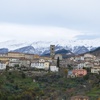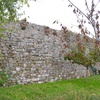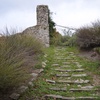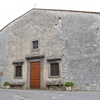Castle of Coreglia Antelminelli
The village of Coreglia during the Middle Ages was the centre of power of the Antelminelli family. Its ancient origins are testified by written sources as early as 1048, when it was mentioned as a military fortress built by the Rolandinghi of Loppia.
The highlights of the town are the Church of St. Michael, the Church of St. Martin and the Museum of Plaster Figurines and Emigration.
Originally the castle Church of St. Michael, dating from the 12th century, had a single nave with transept and apse, but underwent several changes as a result of restructuring in the 19th century. Inside it houses several important works, including a baptismal font from the 15th century and an oil tabernacle from the end of the 15th century, recently attributed to Matteo Civitali. Finally, there is a marble group depicting the Annunciation and the Archangel Michael, the work of Giovanni Pisano, from the 14th century.
The Church of St. Martin, whose original structure dates back to the 9th century, is one of the rare examples of early medieval architecture of Lucca. The interior, with its three naves, preserves a magnificent fresco on the apse, dating from the 14th century, and a tabernacle for holy oils by Matteo Civitali.
The Guglielmo Lera Museum of Plaster Figurines and Emigration is certainly worth a visit. Hosted in Palazzo Vanni, it documents the history and activities of manufacturing the plaster "figurines" of Coreglia. The museum houses about 1,300 specimens of sacred and profane plaster items, produced between the 18th and 20th centuries.
Historical notes
The first castle of Coreglia, built around the present church of St. Michael, was composed of a fort defended by a tower and occupying a very limited area. From studies of the historian Guglielmo Lera, it is possible to reconstruct the history of the settlement. A crucial role was played by the residential tower, which was later used as the bell-tower of the castle church. You can still see both slits and up-tilted large windows at the same level in which there is still access to the fortress.
The walls surrounding the town joined to the tower and descended incorporating the part of the town built at the foot of the tower. During this phase, probably in the 12th century, the castle area was accessible through three entrances: one to the west, one to the south (the so-called “Porta Piastri”) and finally one that leads directly to the fort.
In the following centuries the city walls did not undergo many changes, while the fort was extended to the town, becoming, in the thirteenth century, a real stronghold that could accommodate a large number of armed men. The final detectable phase is undoubtedly the construction of a raised patrol trail built between the 14th and 15th centuries.












